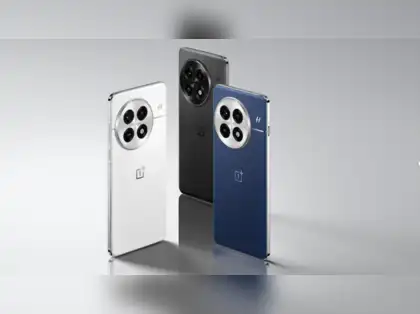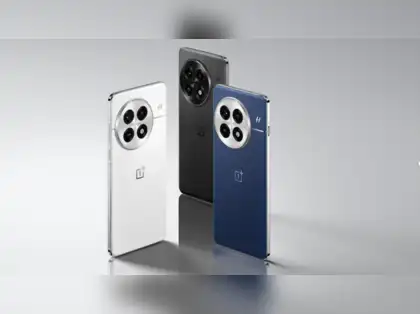Which Mobile Phone Is Best In 2025? Consumers face unprecedented choice, with each flagship offering unique strengths. In this guide, you’ll discover top contenders, real-world performance, and expert tips to find the perfect device.
Why Choosing the Right Phone Matters
Choosing the right phone shapes your digital life. A future-proof device lasts through software updates, captures memories with clarity, and keeps pace with evolving apps. Moreover, understanding update policies ensures long-term security and performance. For enterprise-grade update insights, explore Android System Updates for timely patches and enhancements.
Top Contenders for Best Phone in 2025
Samsung Galaxy S25 Ultra
The Samsung Galaxy S25 Ultra elevates display and camera innovations.
- Display: 6.8″ QHD+ AMOLED; 120 Hz adaptive refresh
- Processor: Exynos 2400 (global); Snapdragon 8 Gen 4 (U.S.)
- Camera: 200 MP main; 50 MP ultrawide; 50 MP telephoto; 10× optical zoom
- Battery: 5,000 mAh with 65 W wired charging
- Price: ₹109,999 (approx.)
Furthermore, Samsung’s update track record promises four major Android upgrades and five years of security patches. Its histographic night mode ensures stunning low-light shots. However, its premium price may deter budget-conscious buyers.
Apple iPhone 16 Pro Max
Apple iPhone 16 Pro Max blends design with raw performance.
- Display: 6.9″ OLED; 120 Hz ProMotion
- Processor: A18 Bionic
- Camera: 48 MP main; 12 MP ultrawide; 12 MP telephoto; LiDAR sensor
- Battery: 4,400 mAh with 30 W wired; MagSafe
- Price: ₹135,000 (approx.)
Moreover, Apple leads in software optimization. You’ll enjoy seven years of iOS updates, consistently improving battery management and security. On the downside, storage upgrades beyond 512 GB significantly increase cost.

Google Pixel 9 Pro
Google Pixel 9 Pro excels in AI-driven photography and pure Android.
- Display: 6.7″ LTPO OLED; 120 Hz
- Processor: Tensor G4
- Camera: 50 MP main; 12 MP ultrawide; 48 MP telephoto
- Battery: 4,800 mAh; 30 W wired charging
- Price: ₹79,999 (approx.)
Pixel’s exclusive features like Magic Eraser and real-time translation set it apart. Google guarantees at least six years of updates, backed by monthly security releases. Yet, its chipset lags slightly behind the latest Snapdragon in raw benchmarks.

OnePlus 13 Pro
OnePlus 13 Pro delivers flagship power at aggressive pricing.
- Display: 6.82″ Fluid AMOLED; 120 Hz LTPO
- Processor: Snapdragon 8 Gen 4
- Camera: 48 MP main; 48 MP ultrawide; 64 MP telephoto
- Battery: 5,200 mAh; 100 W wired; 50 W wireless
- Price: ₹69,999 (approx.)
OnePlus combines speed and smooth OxygenOS experience. Its 100 W charging reaches 100% in under 20 minutes. Furthermore, extended update support spans four major Android versions. Conversely, the camera system still trails Samsung’s ultra-high-res sensor.

Xiaomi 14 Ultra
Xiaomi 14 Ultra stands out with Leica-tuned optics.
- Display: 6.73″ AMOLED; 120 Hz
- Processor: Snapdragon 8 Gen 4
- Camera: 50 MP main (Leica); 50 MP ultrawide; 50 MP telephoto; periscope lens
- Battery: 5,000 mAh; 120 W wired; 50 W wireless
- Price: ₹74,999 (approx.)

Leica collaboration produces true-to-life colors. Xiaomi promises four Android updates and five years of security patches. The only drawback is limited global availability outside key markets.
Comparison Table at a Glance
| Phone Model | Display | Processor | Camera Setup | Battery & Charging | Approx. Price |
|---|---|---|---|---|---|
| Samsung Galaxy S25 Ultra | 6.8″ QHD+ AMOLED; 120 Hz | Exynos 2400; Snapdragon 8 Gen 4 | 200 MP; 50 MP UW; 50 MP Telephoto; 10× | 5,000 mAh; 65 W wired | ₹109,999 |
| Apple iPhone 16 Pro Max | 6.9″ OLED; 120 Hz ProMotion | A18 Bionic | 48 MP; 12 MP UW; 12 MP Telephoto; LiDAR | 4,400 mAh; 30 W wired; MagSafe | ₹135,000 |
| Google Pixel 9 Pro | 6.7″ LTPO OLED; 120 Hz | Tensor G4 | 50 MP; 12 MP UW; 48 MP Telephoto | 4,800 mAh; 30 W wired | ₹79,999 |
| OnePlus 13 Pro | 6.82″ Fluid AMOLED; 120 Hz LTPO | Snapdragon 8 Gen 4 | 48 MP; 48 MP UW; 64 MP Telephoto | 5,200 mAh; 100 W wired; 50 W wireless | ₹69,999 |
| Xiaomi 14 Ultra | 6.73″ AMOLED; 120 Hz | Snapdragon 8 Gen 4 | 50 MP; 50 MP UW; 50 MP Telephoto; Periscope | 5,000 mAh; 120 W wired; 50 W wireless | ₹74,999 |
How to Decide: Your Key Considerations
When weighing “Which Mobile Phone Is Best In 2025”, focus on these factors:
- Performance Needs
- Gamers need top-tier GPUs and high refresh rates.
- Everyday users prioritize balanced CPU power and battery life.
- Camera Preferences
- Ultra-high-res sensors deliver detail; periscope lenses excel in zoom.
- Software features like Night Mode and AI enhancements matter.
- Software Updates
- Longer update support extends device lifespan.
- Enterprise users should learn about Android System Updates for timely security patches.
- Budget Constraints
- Flagships exceed ₹100,000; value flagships offer core features under ₹80,000.
- Trade-offs between premium builds and cost can guide smart choices.
Furthermore, always consider after-sale support and warranty in your region. Local service centers and parts availability can greatly influence long-term satisfaction.

Final Verdict: Best Overall Pick
After analyzing specs, performance, and real-world usability, the Samsung Galaxy S25 Ultra emerges as the best overall phone in 2025. It balances cutting-edge camera hardware, robust performance, and extended software support. However, value seekers might find the OnePlus 13 Pro equally compelling at a lower price point.

